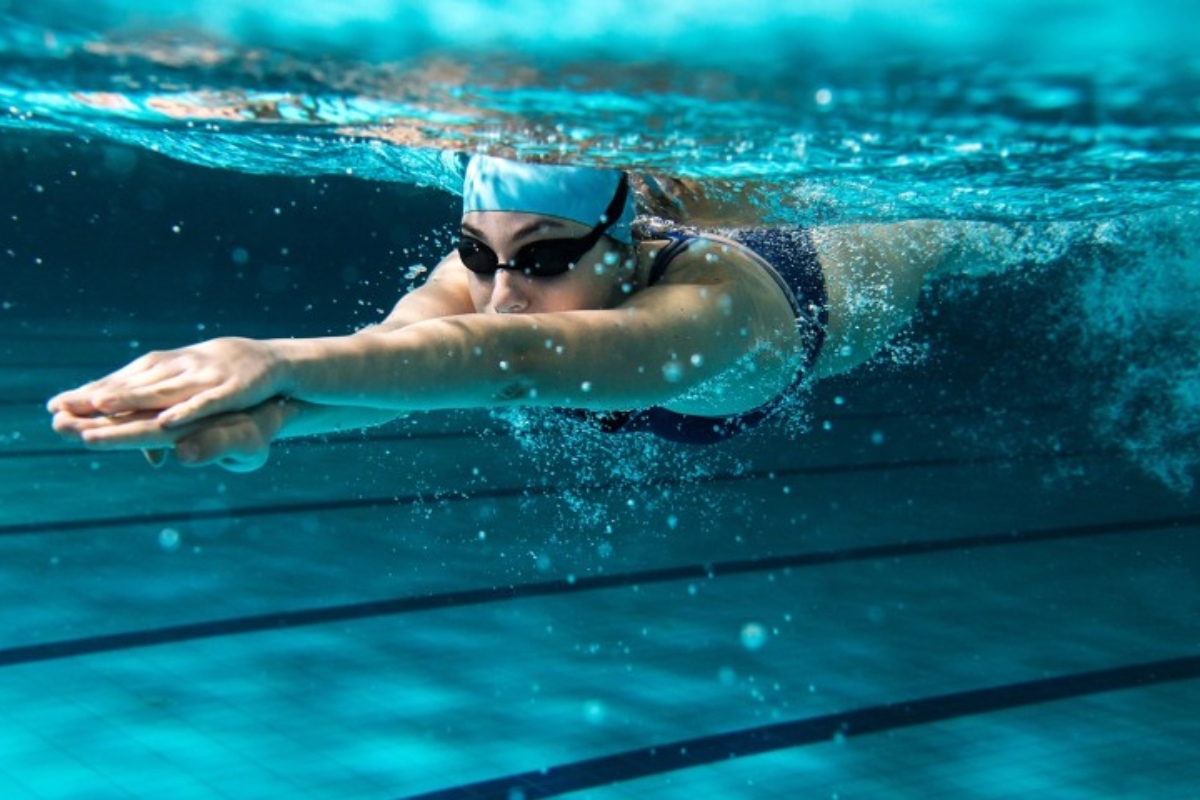Swimming is a great form of exercise for people of all ages and abilities. It’s a low-impact activity that can provide a variety of health benefits, including improving your cardiovascular fitness, strengthening your muscles and joints, and aiding in weight loss.
Lap swimming, in particular, offers several advantages over other types of swimming.
Table of Contents
10 Benefits of Lap Swimming That May Surprise You
1. A great workout for your heart and lungs
Lap swimming is an excellent way to strengthen your cardiovascular system. This type of exercise requires you to use large muscle groups in a rhythmic, aerobic fashion, which helps to improve your heart and lung function. In fact, lap swimming has been shown to be just as effective as running for cardiovascular health.
2. Weight loss
If you’re looking to lose weight, lap swimming can be an effective strategy. This type of exercise burns a significant number of calories, making it a great way to create a calorie deficit and see results on the scale. What’s more, lap swimming can help you to maintain your weight loss in the long term.
3. Improved muscle strength and joint flexibility
Swimming is a great way to tone your muscles and improve your range of motion. The resistance of the water helps to build muscle strength, while continuous movement helps to increase flexibility. This can be especially beneficial for people who are looking to recover from an injury or avoid future injuries.
4. Low-impact exercise
Lap swimming is a low-impact activity, which means it’s easy on your joints and muscles. This makes it an ideal form of exercise for people who are recovering from injuries or who have joint pain. What’s more, lap swimming is a great way to stay active as you age, since it’s easy on the body.
5. Improved mental health
Exercise has been shown to improve mental health, and lap swimming is no exception. This type of exercise can help to reduce stress, anxiety, and depression. It can also help to improve your mood and increase your sense of well-being.
6. Better sleep
Regular exercise has been shown to improve sleep quality, and lap swimming is a great way to get your workout in. This type of exercise can help to promote deep, restful sleep and can also help to reduce the symptoms of insomnia.
7. A boost in brain power
Lap swimming can help to improve your cognitive function. A study published in the journal Frontiers in Human Neuroscience found that lap swimming can help to increase brain volume and improve memory. Another study found that lap swimming can help to reduce the risk of dementia.
8. Enhanced longevity
Exercise has been shown to improve lifespan, and lap swimming is a great way to get your workout in. A large-scale study published in the journal PLOS Medicine found that people who exercised regularly were 31% less likely to die over a 14-year period.
9. Lower blood pressure
Lap swimming can help to lower blood pressure. This is due to the fact that exercise helps to improve cardiovascular health, which in turn helps to reduce the strain on your heart. What’s more, lap swimming can help to reduce “bad” LDL cholesterol and increase “good” HDL cholesterol, which also helps to lower blood pressure.
10. improved insulin sensitivity
Lap swimming can help to improve your body’s sensitivity to insulin. This is important because it can help to reduce the risk of developing type 2 diabetes. In fact, a study published in the journal Diabetes Care found that lap swimming can help to improve insulin sensitivity by up to 16%.
Start Lap Swimming: What You Need to Know
Now that you know some of the many benefits of lap swimming, you may be wondering how to get started. Here are a few things you should keep in mind:
1. Choose the right type of pool
If you’re new to lap swimming, it’s important to choose the right type of pool. You’ll want to make sure the pool is large enough to accommodate your strokes and that the water is deep enough to avoid hitting the bottom. You may also want to consider a pool with a slow current, which can help you swim laps more easily.
2. Invest in the right gear
You don’t need a lot of gear to start lap swimming, but there are a few things you’ll want to have. First, you’ll need a good pair of swim goggles to help you see underwater. You’ll also need a swimsuit that fits well and won’t fall off when wet. Finally, you may want to invest in a swim cap and earplugs to help keep your hair dry and protect your ears from the chlorinated water.
3. Start slow
If you’re new to lap swimming, it’s important to start slow and gradually increase your distance. You may also want to start with a shorter pool length, such as 25 meters, and work your way up to a longer pool, such as 50 meters. Remember, it’s important to listen to your body and take breaks when you need them.
4. Practice good form
Good swimming form is important for both efficiency and injury prevention. When swimming laps, be sure to keep your body straight and your head down. You should also focus on using your larger muscles, such as your legs and back, to move you through the water. Finally, be sure to exhale regularly and evenly to prevent yourself from getting too much water in your lungs.
Conclusion
Lap swimming is a great way to get exercise and enjoy the many health benefits that come with it. When starting out, be sure to choose the right type of pool, invest in the right gear, and start slow. Most importantly, focus on practicing good form to help you swim laps more efficiently and prevent injuries.

